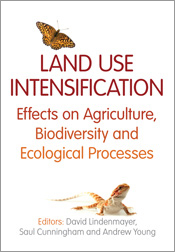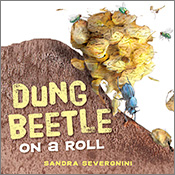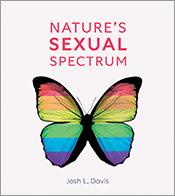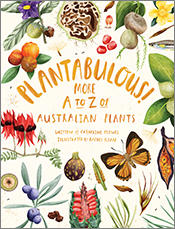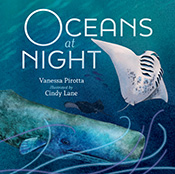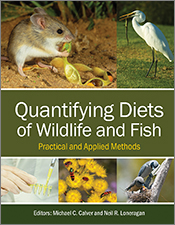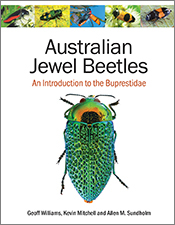Land Use Intensification
Effects on Agriculture, Biodiversity and Ecological Processes
Edited by: David Lindenmayer, Saul Cunningham, Andrew YoungCan science suggest new approaches to reducing the conflict between productive land use and biodiversity conservation?
There can be little doubt that there are truly colossal challenges associated with providing food, fibre and energy for an expanding world population without further accelerating already rapid rates of biodiversity loss and undermining the ecosystem processes on which we all depend. These challenges are further complicated by rapid changes in climate and its additional direct impacts on agriculture, biodiversity and ecological processes. + Full description
There are many different viewpoints about the best way to deal with the myriad issues associated with land use intensification and this book canvasses a number of these from different parts of the tropical and temperate world. Chapters focus on whether science can suggest new and improved approaches to reducing the conflict between productive land use and biodiversity conservation.
Who should read this book? Policy makers in regional, state and federal governments, as well as scientists and the interested lay public.
- Short descriptionNews
No longer available in a print edition.
Features
- Engaging style and high quality chapter text and content
- Practical information that is based on very high quality scientific information
- Respected scientists with incisive insights on the core topics
Contents
List of contributors1 Land use intensification: a challenge for humanity
Part A General themes and principles
2 Combining biodiversity conservation with agricultural intensification
3 Managing biodiversity in agricultural landscapes: perspectives from a research–policy interface
4 Intensive farming and its role in wildlife conservation: routes to squaring the circle?
Part B Specific case studies
5 Land use changes imperil South-East Asian biodiversity
6 How agricultural intensification threatens temperate grassy woodlands
7 Mitigating land use intensification in the endemic-rich hotspots of southern Africa and western Indian Ocean
8 Land use intensification, small landholders, and biodiversity conservation: perspectives from the Eastern Himalayas
9 Riches to rags: the ecological consequences of land use intensification in New Zealand
10 Land use intensification and the status of focal species in managed forest landscapes of New Brunswick, Canada
11 Land use intensification impacts on biodiversity in the mallee/wheat landscape of central NSW
12 Ecological responses of Australian grassy woodland and shrubland ecosystems to agricultural intensification: lessons from long-term, multi-species, multi-biome studies
13 Land use intensification in natural forest settings
14 Intensification of coffee production and its biodiversity consequences
Part C General discussion
15 Perspectives on land use intensification and biodiversity conservation
Index
Authors
David Lindenmayer is a Research Professor at The Australian National University. He has published 31 other books as well as over 760 scientific publications, which have addressed issues associated with ecological and biodiversity monitoring. He has worked on Australian biodiversity for more than 25 years and is a member of the Australian Academy of Science.Saul Cunningham is a CSIRO scientist. He works on biodiversity in mosaic landscapes of agriculture and native vegetation, and on ecosystem services that support production. He is the author of more than 50 papers in refereed journals and is a member of a global grouping of scientists examining the state of pollinators in agricultural landscapes.
Andrew Young is a CSIRO scientist researching many aspects of plant genetics and demographics. He has published more than 50 refereed publications. He is also Associate Editor of the leading journals Conservation Biology, Conservation Genetics, Genetica and Biological Conservation. He won the AAS Fenner Medal in 2003, and CSIRO Newton-Turner Medal in 2008.

